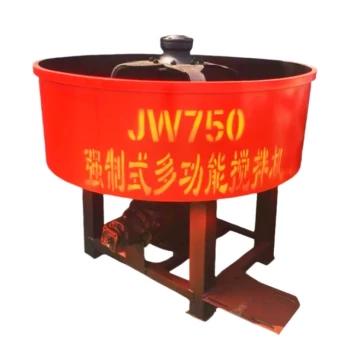Modern concrete production demands more than just raw materials and mixing equipment—it requires intelligent monitoring systems that ensure consistent quality, reduce waste, and comply with industry standards. Advanced sensor networks have revolutionized concrete mixing stations by providing real-time data on temperature, moisture, weight, and structural integrity.
This article explores how these technologies work together to create a self-correcting production environment, backed by case studies demonstrating measurable improvements in efficiency and compliance.
Sensor Technologies in Concrete Mixing Stations
Concrete mixing stations rely on interconnected sensors to maintain optimal conditions throughout production. These systems eliminate guesswork, ensuring every batch meets exact specifications.
Temperature Regulation and Material Stability
Temperature fluctuations can weaken concrete or accelerate curing unpredictably. Modern stations use embedded thermal sensors to:
- Monitor raw material temperatures (e.g., aggregates, water)
- Adjust mixer speed or water content to counteract heat from chemical reactions
- Prevent thermal cracking in finished products
Did you know? A 10°F deviation in mixture temperature can alter curing time by up to 20%, risking structural defects.
Moisture Control for Consistent Mixture Ratios
Water content directly impacts concrete strength. Microwave-based moisture sensors provide instant feedback by:
- Scanning aggregates for hidden dampness before mixing
- Automatically recalculating water-to-cement ratios
- Reducing slump test failures by 35% (industry benchmark)
Weight Measurement and Batch Accuracy
Load cells and strain gauges ensure precise proportions by:
- Tracking raw material dispensing to ±0.5% accuracy
- Syncing with inventory systems to flag depleted stocks
- Preventing overbatching, which accounts for 12% of material waste in non-automated plants
Automated Quality Assurance Systems
Sensors alone aren’t enough—they need intelligent integration with control systems to drive decisions.
Real-Time Data Integration with PLCs
Programmable Logic Controllers (PLCs) process sensor inputs to:
- Adjust mixer RPM based on viscosity readings
- Trigger alarms for out-of-spec conditions (e.g., sudden pH drops)
- Log batch data for ISO 9001 compliance audits
Error Detection and Process Adjustment Mechanisms
Self-diagnosing systems identify issues like:
- Sensor drift: Recalibrates measurement devices mid-cycle
- Material segregation: Activates additional mixing cycles
- Equipment wear: Predicts bearing failures in mixer motors 72+ hours in advance
Imagine a plant where every anomaly triggers corrective actions before human operators notice—this is now standard in sensor-optimized stations.
Case Studies and Industry Benchmarks
Reduced Waste in Precast Concrete Manufacturing
A Midwest precast producer implemented moisture/weight sensors and saw:
- 28% less raw material overuse
- 15% faster batch cycles (no manual adjustments)
- Zero ASTM C39 strength test failures over 6 months
Sensor-Driven Compliance with ASTM Standards
Plants using integrated sensor networks consistently outperform manual operations in:
- ASTM C94: Slump, temperature, and air content compliance
- ASTM C172: Sampling accuracy during batch extraction
- ASTM C31: Curing environment stability
Conclusion: Building Smarter with Data-Driven Mixing
Sensor ecosystems transform concrete production from a reactive process into a predictive, self-optimizing system. Key takeaways:
- Precision monitoring of temperature/moisture prevents costly rework.
- Automated PLC responses reduce human error and downtime.
- Compliance becomes effortless with continuous data recording.
For construction machinery designed to integrate with these smart systems—like Garlway’s winches and batching plant components—the future lies in interoperability. Equipment that "speaks the language" of sensor networks will dominate next-generation job sites.
Ready to upgrade your mixing station’s intelligence? Start by auditing which manual processes could be replaced with sensor-driven automation.
Related Products
- HZS75 Concrete Batching Plant Cement Mixer Price Concrete Mixer Bunnings Mixing Plant
- HZS180 Ready Mix Concrete Plant for Foundations with Sand and Cement
- Portable Concrete Mixer Machine Equipment for Mixing Concrete
- Commercial Construction Mixer Machine for Soil Cement Mixing Concrete
- HZS120 Ready Mix Concrete Batching Plant Commercial Mud Cement Mixer
Related Articles
- How to Diagnose, Repair, and Prevent Cylinder Leaks in Concrete Mixing Stations
- How to Protect Concrete Mixing Stations From Extreme Weather Damage
- How to Prevent Cold-Weather Lubrication Failures in Concrete Mixing Stations
- Optimizing Infrastructure Efficiency: How to Choose Between Concrete and Stabilized Soil Mixing Plants
- Optimizing Concrete Plant Storage: How to Balance Capacity, Compliance, and Costs















